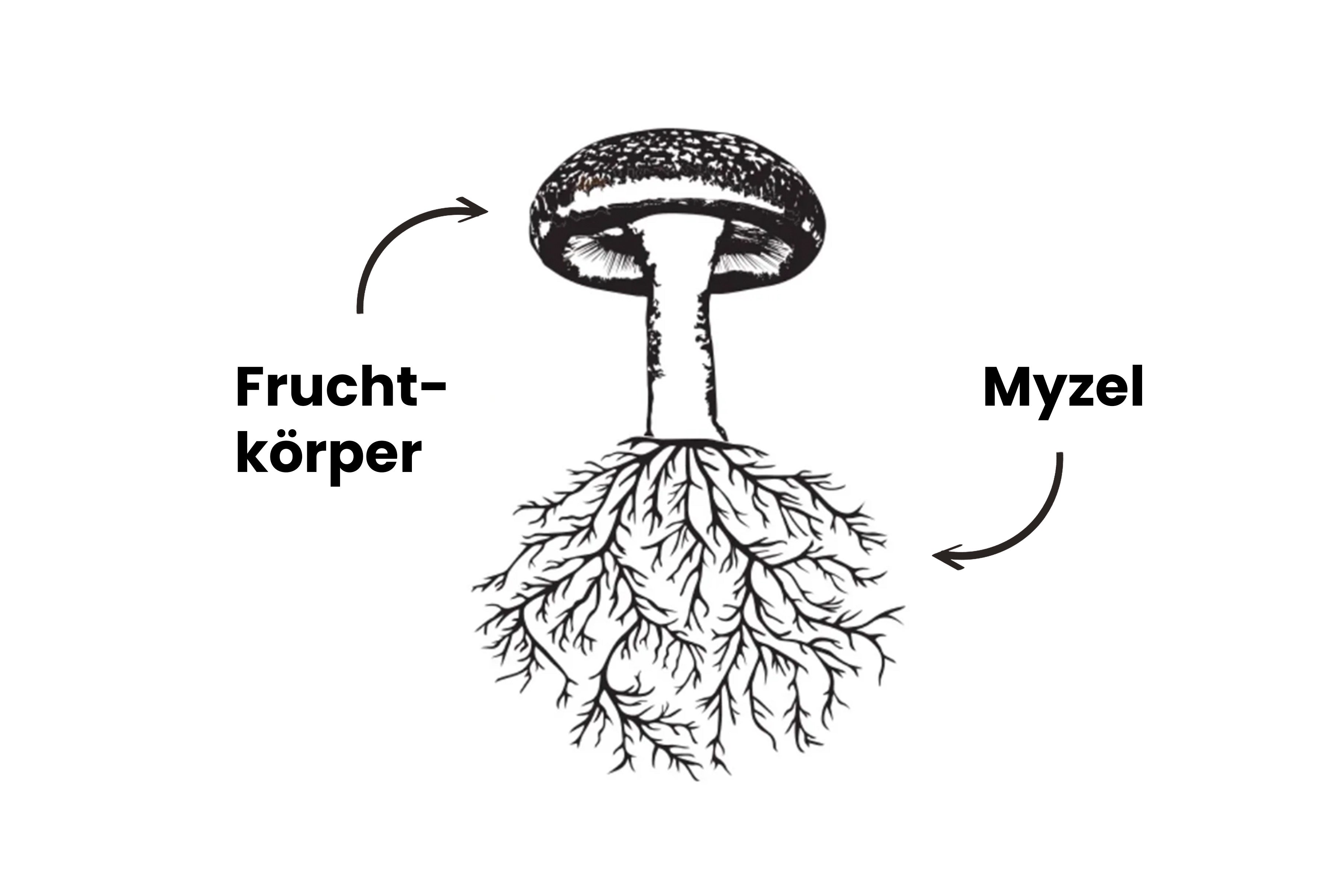Fungi are fascinating organisms that are often overlooked despite playing crucial roles in ecosystems. Their life cycle is diverse and complex, with two main structures playing an important role: fruiting bodies and mycelium. In this article we take a closer look at these two aspects and discover their importance to the mushroom kingdom.

Fruiting Body: The Visible Manifestation
Fruiting bodies are the visible parts of the mushroom that we typically refer to as “mushrooms.” They come in a variety of shapes, colors and sizes, from tiny dots on leaf litter to the imposing chapters of mushrooms like fly agaric. The function of the fruiting bodies is to produce and disperse spores, which aids in reproduction.
Among the fruiting bodies there are several types, including:
-
Basidial fruiting bodies : These include the characteristic “mushroom heads” that we commonly see. They produce spores on special cells called basidia, which are located on the lamellae or tubes inside the fruiting body.
-
Ascomycete fruiting bodies : These are called ascocarps and contain spores in special structures called asci. Examples of ascomycetes are truffles and molds.
-
Zygomycete fruiting bodies : These are often less conspicuous and can take on a variety of shapes, including mushroom-shaped structures or felty coverings. They produce spores in special cells known as zygospores.
Mycelium: The hidden network
While fruiting bodies are the visible parts of the fungus, most of the organism is made up of a hidden network of thread-like structures known as mycelium. The mycelium penetrates the soil or substrate in which the fungus grows and plays a crucial role in nutrient absorption and interaction with other organisms.
The mycelium consists of thin threads called hyphae that branch out and form an extensive network. These hyphae produce enzymes that break down organic materials and release nutrients for the fungus. Through this ability to break down organic substances, fungi play an important role in the breakdown of dead organic material, thereby contributing to nutrient cycling in ecosystems.
The connection between fruiting body and mycelium
Although fruiting bodies and mycelium have different functions, they are closely related. The mycelium is the actual life form of the fungus and often exists undetected in the soil or substrate for years. Only under certain conditions, such as humidity and temperature, does the mycelium form fruiting bodies in order to produce spores and spread.
In addition, the mycelium allows communication and exchange of nutrients between different fungi and even between fungi and other organisms. This occurs through a complex network of chemical signals known as mycorrhiza, which helps fungi interact with plants and achieve mutual benefits.
Conclusion
Fruiting bodies and mycelium are two essential components in the mushroom life cycle. While fruiting bodies are the visible manifestation and are responsible for reproduction, the mycelium forms the hidden network that is crucial for nutrient absorption and interaction with the environment. Through their interaction, fruiting bodies and mycelium contribute significantly to the diversity and stability of ecosystems and therefore deserve our attention and recognition.
